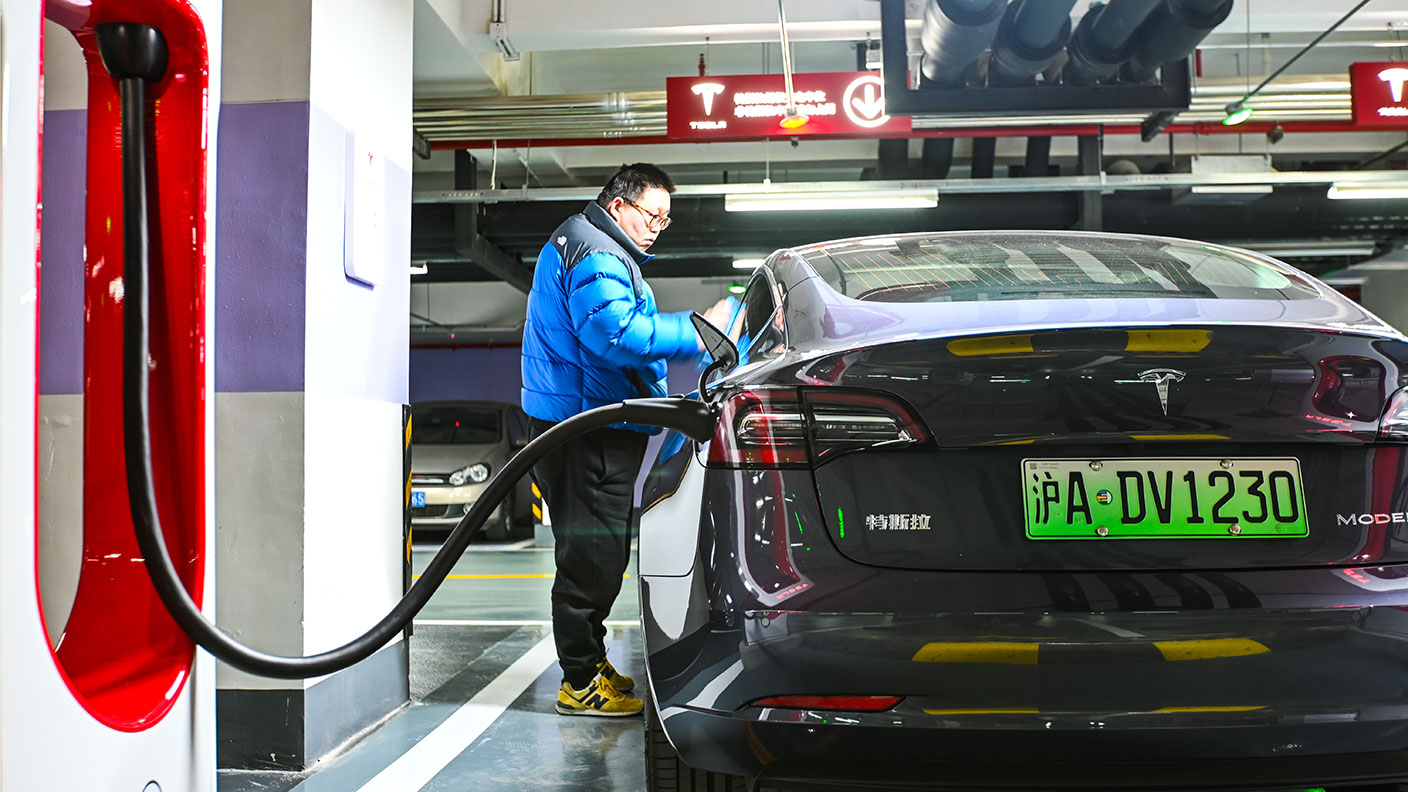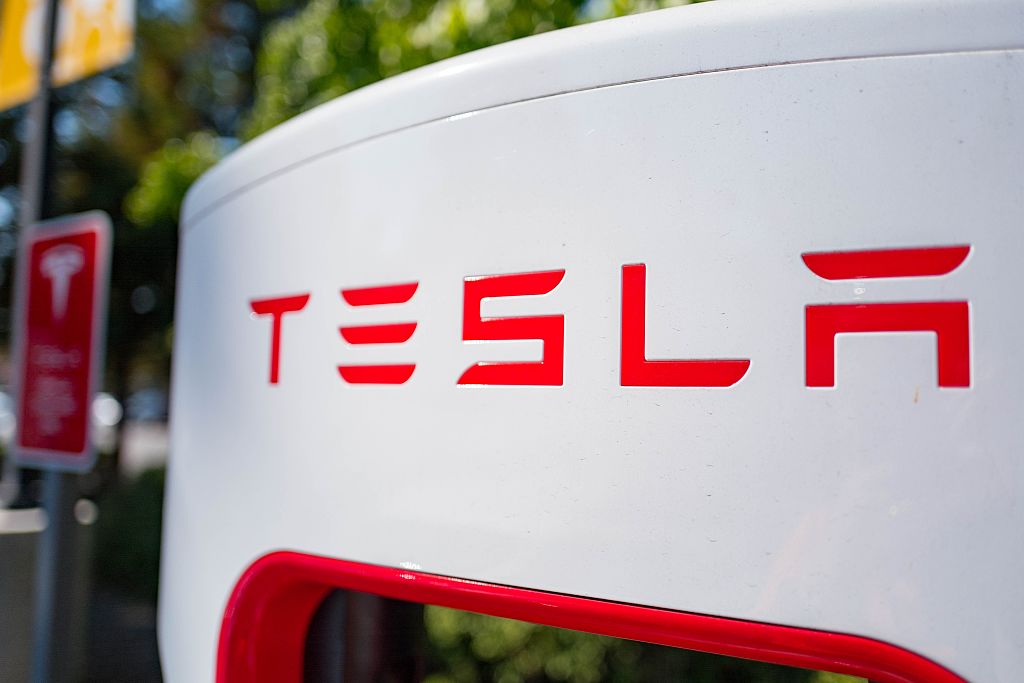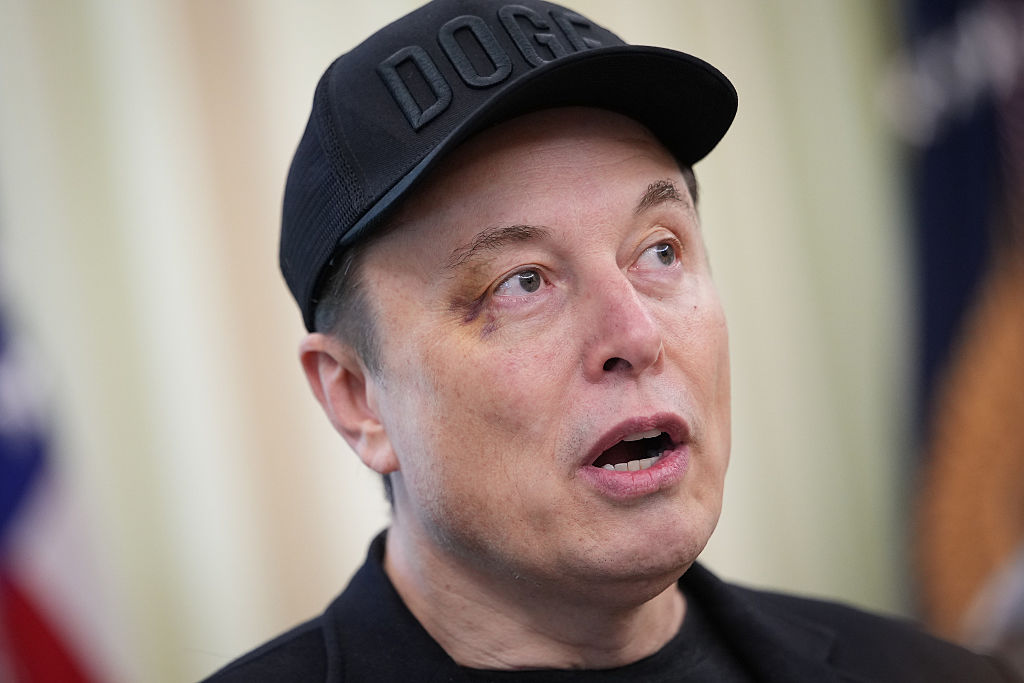Think Tesla is a bubble? This might be the best way to bet on it bursting
The huge rise in Tesla’s share price means that, by market value, it’s now the sixth-largest company in the US and and the world’s biggest car-maker. Shorting it is a dangerous game. But there are other ways to bet on the bubble bursting. John Stepek explains how.


Quick reminder – Merryn will be interviewing Charles Plowden of Baillie Gifford on Thursday. If you haven’t already registered to watch it, make sure you don’t miss out!
Back to this morning – I saw a very striking chart on Twitter the other day. Dylan Grice of Calderwood Capital (an occasional MoneyWeek contributor) noted that electric car-maker Tesla is now valued at roughly the same amount as the entire S&P 500 oil sector.
“The equity market seems to be saying that oil has no future, and that energy transition is basically here. I feel like that’s jumping the gun.” Needless to say, I agree.
MoneyWeek
Subscribe to MoneyWeek today and get your first six magazine issues absolutely FREE

Sign up to Money Morning
Don't miss the latest investment and personal finances news, market analysis, plus money-saving tips with our free twice-daily newsletter
Don't miss the latest investment and personal finances news, market analysis, plus money-saving tips with our free twice-daily newsletter
A future of self-driving hover-cars
One day our cars will all be electric. One day they will all run on batteries with incredibly long life expectancies. One day said batteries will all be charged up via the wind and the rain and the sun.
In short, we will drive (or rather, be driven) to and from our destinations in weather-powered vehicles, and the only environmental impact will be the bits of our cars’ tyres that rub off on the roads, which will no doubt then become the next big headline enemy we have to deal with, at which point we’ll finally get the hover-cars we’ve all been waiting for since the 1950s (or the 1980s, if Back to the Future is more your era).
That all sounds lovely and I can’t wait, but it isn’t happening today. And it isn’t happening tomorrow. It may take a while longer and, in the meantime, as one Robert Burns once put it, “the best laid schemes o’ mice an’ men gang aft agley”. In other words, the market should probably be pricing in a little bit of uncertainty, given that, as Grice points out, the energy transition hasn’t actually arrived yet.
Yet, things still seem heavily weighted towards the Tesla end of the argument. There are some utterly extraordinary statistics in John Authers’ Bloomberg newsletter this morning: Tesla is now the sixth-largest company in the US by market value; it is the world’s largest car maker on the same measure.
Not only that, when it joined the S&P 500 index last month, it single-handedly rendered “Wall Street’s estimates for five-year earnings growth more optimistic than they had ever been”. In other words, analysts expect Tesla’s earnings to grow so rapidly that its inclusion in the S&P 500 has distorted estimates for the entire index.
Anyway. Is it a tech bubble? Is it a green bubble? Is it just a Tesla bubble? Who knows? Shorting Tesla (or anything in its vicinity) feels about as sensible as running out in front of one of its cars just after the driver has decided to stick the autopilot on and snatch 40 winks.
A better way to express and profit from scepticism on the Tesla bubble is to look for “anti-bubbles”. And the most obvious one here is not so much in the other car makers (though they might be worth looking at), but in the old-fashioned energy sector.
How to invest in oil
Markets are starting to wake up to the fact that the death of oil might have been over-exaggerated. When the price of a vital commodity turns negative (as oil did briefly in April last year) then even the most gloomy of oil analysts had to feel that something of a bottom might have been reached.
Since then, we’ve had ongoing abstention by producers, with Saudi Arabia springing a surprise production cut on markets earlier this month. The oil majors are focusing on grabbing headlines for their “clean” investments. Just this morning, Shell has bought Ubitricity, which owns the biggest public electric vehicle charging network in the UK.
And yet, life is returning to oil markets, even as the price steadily recovers from the tough days. As Justin Jacobs in the FT reports, the number of rigs for drilling oil and gas in the US has risen for nine weeks in a row and is now about 40% higher than at its low point in summer 2020. Oil services companies have been reporting better than expected fourth-quarter earnings, as activity starts to pick up.
As ever, the market has anticipated the rebound, with the S&P oil and gas equipment and services sector up about 60% in the last three months alone. And yet, the industry really is recovering from an extremely low ebb – oil producers are not keen to splash the cash yet. As Jacobs notes, the biggest driver of the industry in recent years has been desperately-expanding US shale producers – and those days are over now. Shale players, having been told off by their investors, are “now consolidating and shifting to an emphasis on profits over production growth”.
That in turn indicates that supply of oil will recover more slowly than demand for oil. So while in the long run, oil may well be doomed in favour of electricity, I suspect there’s at least one more boom-and-bust cycle to squeeze some juice out of here.
What does it all suggest? You can invest in oil in a number of different ways. My colleague Dominic has always viewed BHP Billiton as the best bet (yes, it’s best known as a miner but it gets a lot of its money from the sector and appears to be a better play on the oil price than BP or Shell).
That’s just one idea. We’ll have more in MoneyWeek magazine as we look more into the burgeoning new commodities supercycle in coming issues. If you’re not already a subscriber, get your first six issues free here.
Get the latest financial news, insights and expert analysis from our award-winning MoneyWeek team, to help you understand what really matters when it comes to your finances.
John Stepek is a senior reporter at Bloomberg News and a former editor of MoneyWeek magazine. He graduated from Strathclyde University with a degree in psychology in 1996 and has always been fascinated by the gap between the way the market works in theory and the way it works in practice, and by how our deep-rooted instincts work against our best interests as investors.
He started out in journalism by writing articles about the specific business challenges facing family firms. In 2003, he took a job on the finance desk of Teletext, where he spent two years covering the markets and breaking financial news.
His work has been published in Families in Business, Shares magazine, Spear's Magazine, The Sunday Times, and The Spectator among others. He has also appeared as an expert commentator on BBC Radio 4's Today programme, BBC Radio Scotland, Newsnight, Daily Politics and Bloomberg. His first book, on contrarian investing, The Sceptical Investor, was released in March 2019. You can follow John on Twitter at @john_stepek.
-
 ‘Why I have ditched my Help to Buy ISA for cash savings and the stock market’
‘Why I have ditched my Help to Buy ISA for cash savings and the stock market’Without the 25% bonus, my Help to Buy ISA is effectively redundant, says MoneyWeek writer Sam Walker.
-
 Is your inheritance tax allowance cut if you sell to downsize or sell your home to pay for care?
Is your inheritance tax allowance cut if you sell to downsize or sell your home to pay for care?Downsizing relief is a little-known benefit that could save your loved ones tens of thousands of pounds in inheritance tax after you’ve died.
-
 The top stocks of 2025 - did you pick a winner?
The top stocks of 2025 - did you pick a winner?As a chaotic year in the stock market draws to a close, we review which stocks were investors’ top picks for 2025
-
 8 of the best houses for sale with electric vehicle charging
8 of the best houses for sale with electric vehicle chargingThe best houses for sale with electric vehicle charging – from a converted World War II control tower in Scotland, to a Victorian country house in Cumbria
-
 Canada will be a winner in this new era of deglobalisation and populism
Canada will be a winner in this new era of deglobalisation and populismGreg Eckel, portfolio manager at Canadian General Investments, selects three Canadian stocks
-
 Key lessons from the MoneyWeek Wealth Summit 2025: focus on safety, value and growth
Key lessons from the MoneyWeek Wealth Summit 2025: focus on safety, value and growthOur annual MoneyWeek Wealth Summit featured a wide array of experts and ideas, and celebrated 25 years of MoneyWeek
-
 The Stella Show is still on the road – can Stella Li keep it that way?
The Stella Show is still on the road – can Stella Li keep it that way?Stella Li is the globe-trotting ambassador for Chinese electric-car company BYD, which has grown into a world leader. Can she keep the motor running?
-
 'EV maker Faraday Future will crash'
'EV maker Faraday Future will crash'Faraday Future Intelligent Electric is failing dismally to live up to its name, says Matthew Partridge
-
 Tesla seeks approval to supply electricity to UK homes – could it disrupt the energy market?
Tesla seeks approval to supply electricity to UK homes – could it disrupt the energy market?Tesla has applied for a license to supply UK households with electricity, but taking on the biggest providers could prove challenging
-
 Tesla shares slump over Trump/Musk feud
Tesla shares slump over Trump/Musk feudA war of words has sent Tesla shares spiralling to the company’s largest single-day value decline in history
